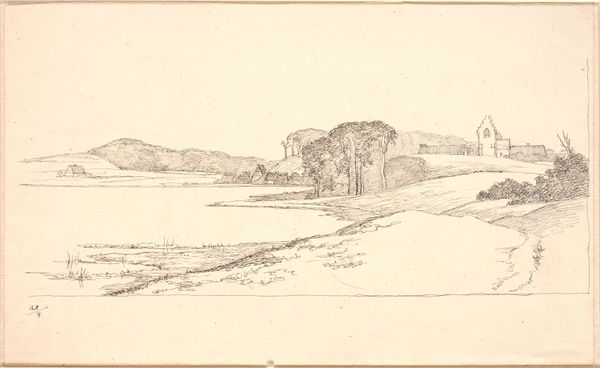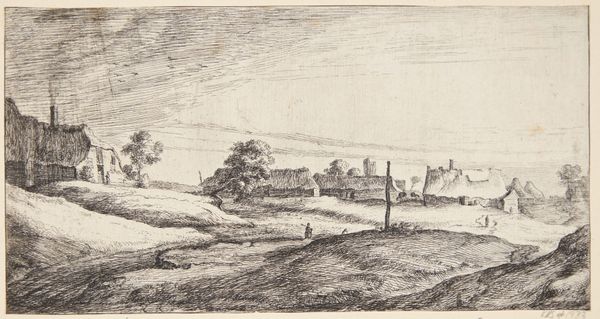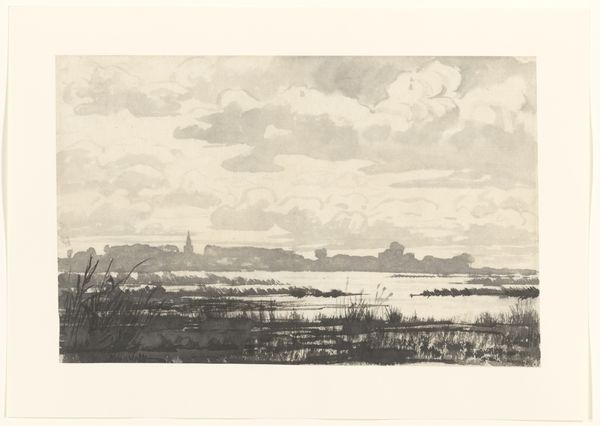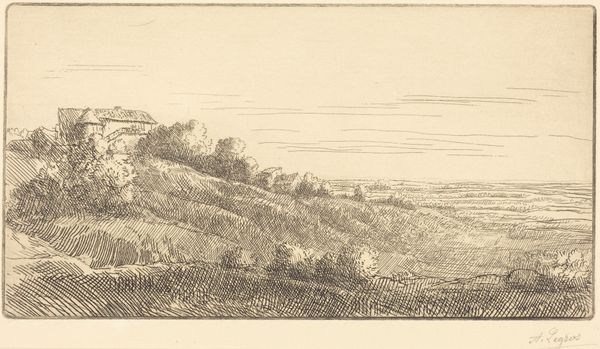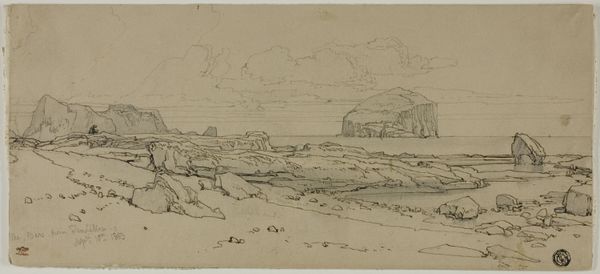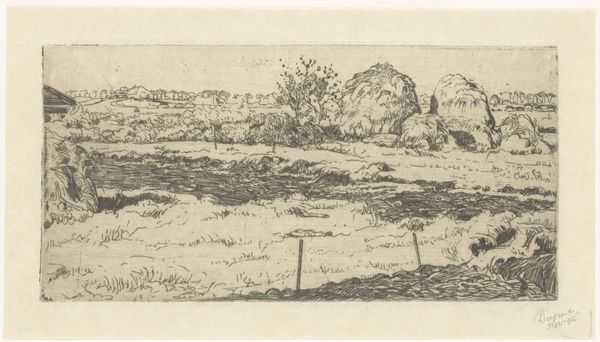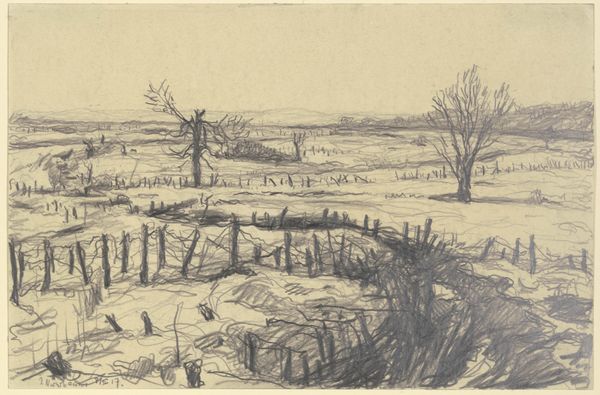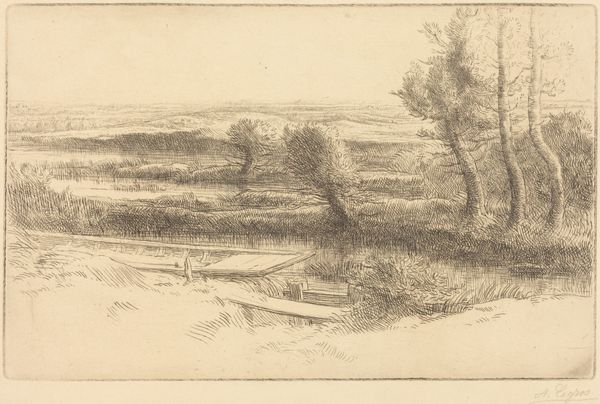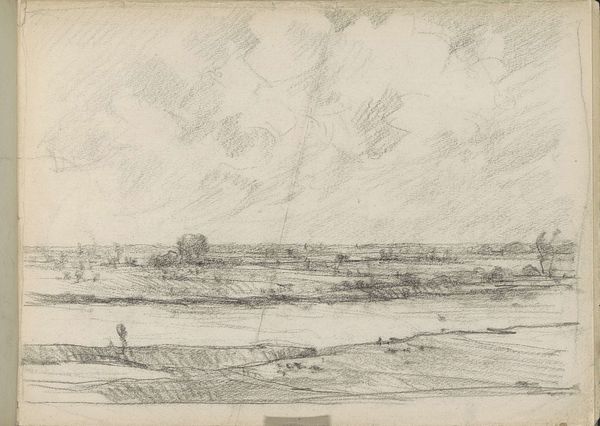
#
quirky sketch
#
pen sketch
#
sketch book
#
personal sketchbook
#
sketchwork
#
ink drawing experimentation
#
pen-ink sketch
#
sketchbook drawing
#
storyboard and sketchbook work
#
sketchbook art
Dimensions: height 300 mm, width 395 mm
Copyright: Rijks Museum: Open Domain
Curator: Today we’re looking at “Huesca,” a 2003 pen and ink drawing by Rein Dool, found within his sketchbook. The work is now part of the Rijksmuseum collection. Editor: There’s an immediacy to it, a fleeting quality, like Dool was quickly trying to capture a feeling, an impression. Is it even finished? Curator: I think that’s the joy of sketchbooks, isn’t it? To catch something at a glimpse. Notice the material—pen on paper. A basic enough means for one to channel what might be construed as, at its heart, the experience of a fleeting impression. Editor: A pretty affordable channel too. Makes you think about access, doesn't it? Like this vista, or something similar, was available to anyone who could wield a pen. Though wielding it like Dool… that’s another matter. Curator: Absolutely. The deceptively simple nature of the materials highlights Dool’s expertise. Look how the varied line weights suggest depth and texture. The layering feels improvisational, reflecting maybe the ever changing atmospheric moods within Huesca, itself? Editor: You can practically smell the dry Spanish earth looking at this. Those clouds brewing overhead speak of coming labor—irrigation maybe. What's most appealing to me is that raw quality—the sense that the image is being directly wrestled from the landscape, rather than politely reproduced. Curator: Beautifully put. There's an unmediated quality to it, a direct conversation between artist and the landscape that transcends any mere depiction. More than that, the very action of applying the ink upon a surface embodies the way any material encounters a concept! Editor: The raw edges of the paper enhance that feeling, as though it's a fragment torn from a larger world, both Dool's world and Huesca's world. Curator: Exactly. The edges remind us of the work’s status as both process and end product. More than that, the edge serves to illustrate how any and every medium—not simply ink, paper, and light—requires the careful touch of the conceptual when forging the world. It’s about being attentive to what is not yet revealed! Editor: Thinking about it as a piece in a collection within the Rijksmuseum… that juxtaposition elevates it, makes you see the ordinary landscape differently, transforms something immediate into something monumental, while simultaneously hinting at a grand history of sketches. Curator: So it makes one meditate on what sketching might suggest. It's something I hope those who see the image get to experience! Editor: Agreed. Something intimate made universal. And cheap enough. What’s not to love?
Comments
No comments
Be the first to comment and join the conversation on the ultimate creative platform.
